Instant coffee has been around, in one form or another, for over a hundred years. And the manufacturing process for instant coffee crystals has definitely improved during that time! But how is instant coffee made today?
Instant coffee is essentially dehydrated coffee extract. The coffee beans are roasted and ground as normal, but once brewed, the coffee then has its water content removed, leaving behind only the coffee solids.
There are two different ways to dehydrate the coffee:
- Spray drying process and
- Freeze drying process
In this post, we’re going to discuss the benefits and drawbacks of each method and which produces better results.
We’ll also talk about why instant coffees sometimes get a bad rap and answer some of the most frequently asked questions about instant coffee!
Let’s jump right in!
What Is Spray Drying Coffee?
During the spray drying process, a fine mist of regular coffee is sprayed into a chamber containing dry, hot air. The coffee’s water content immediately evaporates and coffee powder falls to the bottom of the chamber where it can be collected.
Spray drying can easily be done on a large scale for commercial purposes. This is why most of the instant coffee you’ll find on the instant coffee market is spray dried.
One drawback to this process is that it produces very fine coffee particles.
Before the customer can use this, the coffee has to be rehydrated just a little bit to merge the powder into larger instant coffee granules.
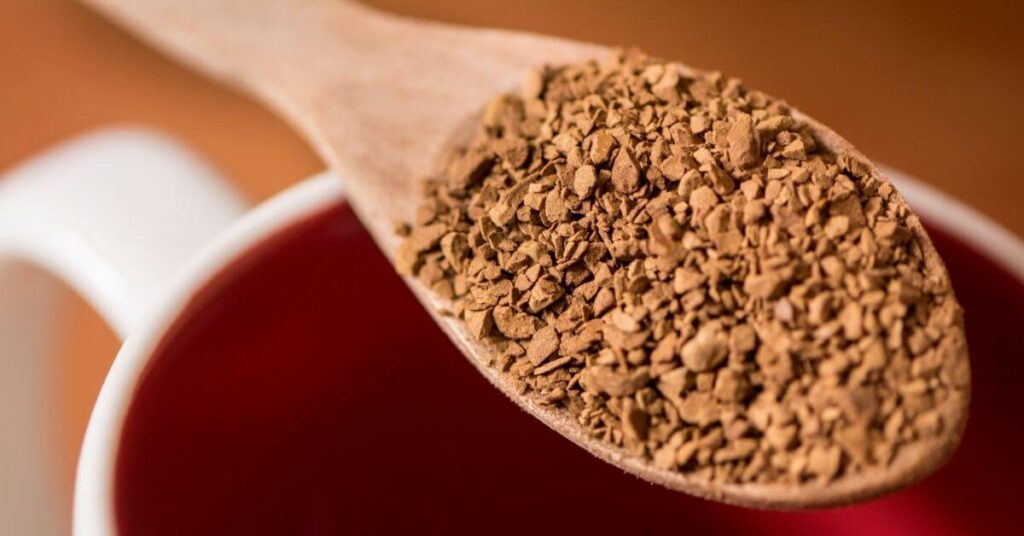
What Is Freeze Drying Coffee?
When freeze-dried, regular coffee is frozen to about -40°F (-40°C), cut into fragments, and then put in a vacuum to extract the water content.
This process actually preserves the coffee flavors, aromas, and caffeine content better than spray drying.
It’s less common than spray drying because it’s harder to do on a large scale and it’s more expensive.
Freeze Dried vs Spray Dried Coffee
When brewed coffee is frozen and placed in an air-free vacuum to dehydrate, it’s considered freeze-dried. While brewed coffee that has its water content evaporated by heat is spray dried.
Each manufacturing process has its own pros and cons:
Freeze Dried
- Preserves the coffee’s flavor better
- Is more expensive
Spray Dried
- Is cheaper to make
- Natural flavors of the coffee are lost
Related Posts:
- How Many TBSP Of Coffee Per Cup? Here’s How To Get It Right!
- Steamed Milk vs Frothed Milk: The Perfect Coffee Companions?
- What Milk Froths Best? Perfect Picks For Your Coffee!
When Did Instant Coffee First Come Out?
A type of instant coffee was given to soldiers during the American Civil War. It was a concentrate of ground coffee mixed with sugar and milk, but it wasn’t true instant coffee as we know it today and by all accounts, it was pretty terrible.
Modern instant coffee (i.e. soluble coffee) was patented 3 times in three different countries.
First in France in 1881. Then again in 1890 in New Zealand, and finally in 1901 in America by Satori Kato.

Why Is Instant Coffee So Bad?
Coffee that’s destined to become instant coffee is brewed in something like a percolator. And percolators are known for producing bitter, over-extracted coffees. This bitter taste remains with instant coffee even after dehydration.
Besides this, there are a few other reasons instant coffee is so bitter.
- instant coffee is made using Robusta coffee beans, which are known for their strong, bitter flavor.
- a low-quality coffee bean may be used to brew instant coffee since it’s seen as a low-quality product.
- the hot air used to dehydrate the coffee extract can negatively affect the coffee flavor.
What’s Some Good Instant Coffee to Try?
If you’re interested in trying instant coffee here are some great instant coffee makers:
1) Nescafe
Nescafe brand of instant coffee has been around since 1938 and is one of my favorites! Nestlé instant coffee is made from a blend of Arabica and Robusta and its house blend is a medium-light roast.
Nestlé product comes in many different flavors and can be found almost anywhere instant coffee is sold.
2) IIly
Illy is an Italian company that’s known for making high-quality coffees. Keep in mind that the quality does affect the price tag, but this one is highly rated by coffee drinkers.
3) Mount Hagen
The Mount Hagen company is an organic, fair-trade instant coffee. But they’re also award-winning with great reviews. If you want a great-tasting instant coffee brand that takes care of its producers, give this one a try.
Cafe Tastle
Most brands use a blend made of part Robusta and part Arabica beans. (There’s nothing wrong with that!) But Cafe Tastle uses 100% Arabica beans.
They also freeze-dry their coffee, which preserves more of the coffee aroma and flavors.
These two factors give this product an advantage when it comes to taste. But you be the judge.
Related Posts:
- How Many TBSP Of Coffee Per Cup? Here’s How To Get It Right!
- Steamed Milk vs Frothed Milk: The Perfect Coffee Companions?
- What Milk Froths Best? Perfect Picks For Your Coffee!
F.A.Q.
Q: How to Make Instant Coffee At Home
If you want to make instant coffee at home, your best option is to make a cold brew coffee concentrate.
With a bottle of cold brew in the refrigerator, you can make a pretty quick cup of coffee instant.
But why can’t you make those instant coffee crystals at home, you ask? The answer is that instant coffee crystals require specialized equipment to make, it’s not feasible to make it at home.
Spray-dried coffee requires a sealed container that can get hot enough to evaporate the falling liquid droplets before they hit the ground. Freeze-dried coffee requires a freezer and an air-tight vacuum for dehydrating the coffee.
Neither of those is something you can just pick up from Walmart.
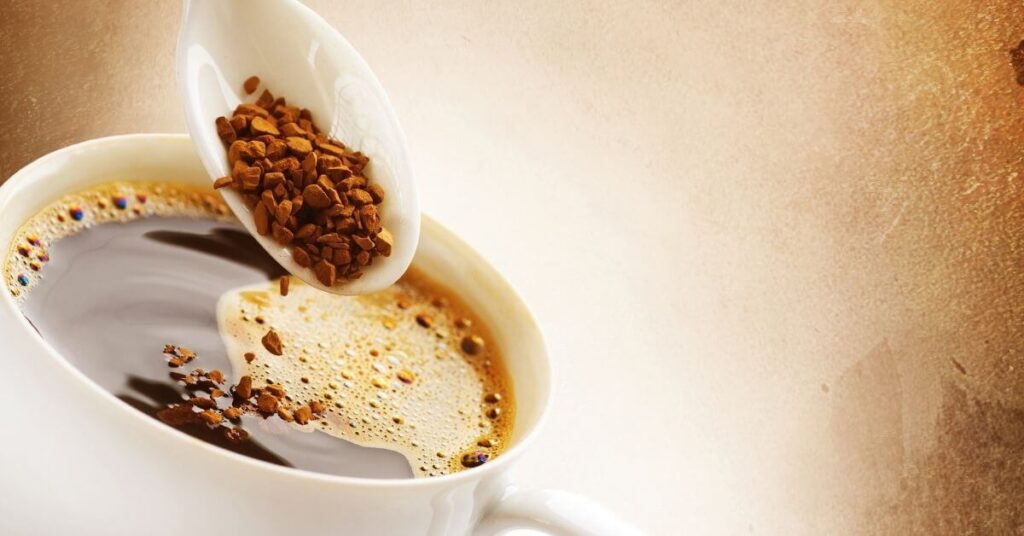
Q: Is Instant Coffee Bad For You?
Instant coffee hasn’t been shown to be bad.
The issue people have with instant coffee has to do with a chemical called acrylamide. Researchers have found that a buildup of acrylamide in your body can cause neuropathy or even increase your risk of cancer.
But other studies have shown that instant coffee doesn’t have enough acrylamide to make it unhealthy.
It has also been shown that instant coffee has a lot of antioxidants and may have other health benefits such as:
- increased liver health
- decreased diabetes risk
- increased metabolism
Q: Does Instant Coffee Dissolve in Cold Water?
Yes! Instant coffee dissolves in cold water.
It might take a bit more stirring because it’s always easier to dissolve things in hot water, but cold water works fine.
In fact, it actually tastes better if you use cold water!
Q: What’s the difference between Instant Coffee and Soluble Coffee?
There is no difference between instant coffee and soluble coffee. They’re the same thing!
Soluble simply means “able to dissolve in liquid.” And the “instant” in instant coffee refers to its ability to be dissolved in water.
Instant coffee is also called coffee crystals, and coffee powder.
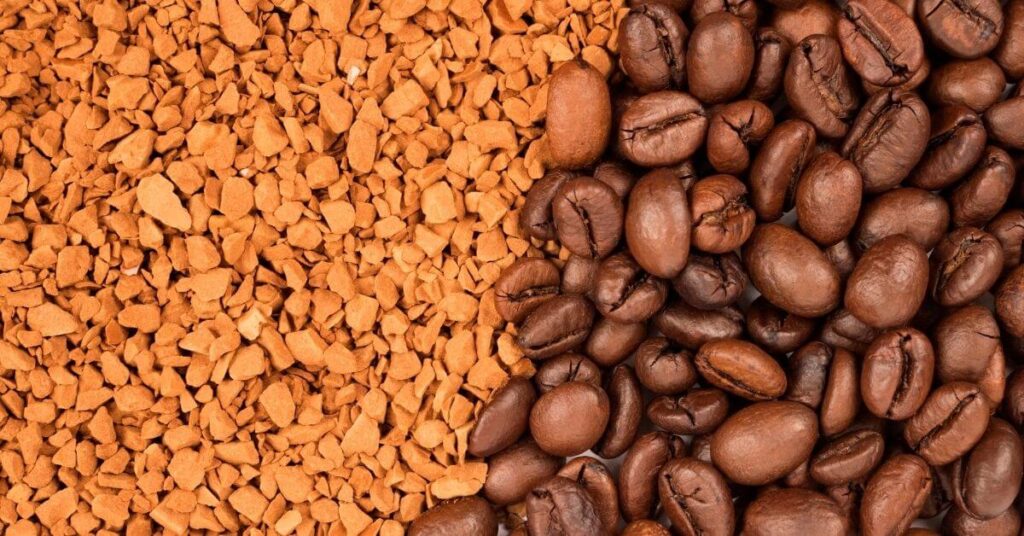
Q: Is Instant Coffee the Same As Ground Coffee?
No, ground coffee is crushed coffee beans. Instant coffee is brewed coffee that has been dehydrated.
Coffee grounds are coffee beans that have been crushed down into very small pieces. Coffee grounds are used to brew coffee in a coffee maker and are thrown away once the coffee is extracted.
Instant coffee, on the other hand, is liquid coffee that has been brewed and dehydrated. There’s no need to brew instant coffee. Simply dissolve the dried coffee into a cup of hot water or milk.
Q: Is Instant Coffee Real Coffee?
Yes, instant coffee is 100% real coffee.
Instant coffee starts out as ground coffee beans that are brewed into a coffee concentrate. Imagine if you could remove the water content from a cup of coffee. All you’d have left is powdered coffee solubles (a.k.a. instant coffee).
Add the water back and voila, you’ve got coffee again. That’s instant coffee in a nutshell.
Related Posts:
- How Many TBSP Of Coffee Per Cup? Here’s How To Get It Right!
- Steamed Milk vs Frothed Milk: The Perfect Coffee Companions?
- What Milk Froths Best? Perfect Picks For Your Coffee!
Q: How to Make Instant Coffee Taste Better?
Mix your instant coffee in with a small amount of cold water before adding hot water. This simple trick will make your instant coffee taste smoother.
You can also:
- Add extra flavors such as cocoa
- Use filtered water to make your coffee
- Use water slightly below boiling (195°F – 205°F)
How Is Instant Coffee Made – The Bottom Line
Making instant coffee has come a long way in the last hundred years. And while it’s not a fan favorite in the United States, many countries around the world prefer it.
Instant coffee is made by either freeze-drying or spray drying. In either case, liquid water is removed and only the dehydrated coffee extract remains.
If you haven’t tried instant coffee, I’d recommend you pick up a box and give it a try. It’s a great product when you want a quick cup of instant coffee or if you’re making coffee-flavored desserts at home.
Cheers Coffee Lovers!

KEEP READING
- 10 Popular Coffee Flavors (And How To Choose The Best!)

- Are Moka Pots Dishwasher Safe? Here’s What To Expect!
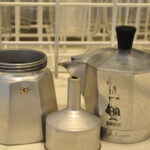
- Coffee Flavor Profiles (How Many Coffees Flavors Exist?)

- Coffee Syrup vs Coffee Sauce (Side By Side Comparison!)
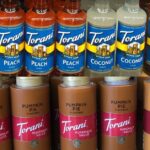
- Coffee Syrups vs Coffee Creamers (Which One To Pick?)

- Does Espresso Break A Fast? Must Know Facts!


Idalmis is co-owner of Coffee Break Lovers. She is a Cuban coffee enthusiast that is passionate about coffee and coffee culture.






